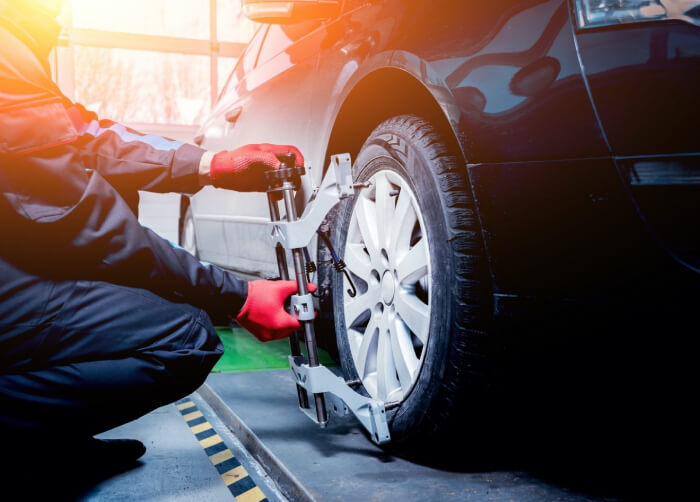Our wheel and tire balancing and mounting service helps ensure the wheels and tires are evenly balanced around the axle to keep your drive smooth and quiet. During our service, we’ll use state-of-the-art equipment to balance each wheel while locating and removing any potential imbalances before replacing the wheels/tires.
They say balance is the key to a happy life, and if your tires could speak, they’d surely agree. Correctly balanced wheels don’t just keep you driving smoothly; they also reduce noise, vibration, and premature tread wear. If you feel you have unbalanced tires, or your handling feels off, stop in and let us check your wheel balance.

What’s Included with our Tire Balancing at Goodyear Auto Service?
Our routine tire and wheel balancing service helps keep your vehicle running smoothly and confidently by ensuring that your tires are spinning as evenly as possible. Our service includes:
- Removing all of your tires and wheels
- Mounting and balancing each wheel using state-of-the-art equipment
- Spinning each wheel to make sure the weight of the wheel and tire are balanced evenly around the axle
- Detecting, locating, and removing any imbalances
- Carefully replacing the wheels on your car
Where Can I Get Tire Balancing Near Me?
All Goodyear Auto Service locations offer tire and wheel balancing and mounting services for your vehicle any time of the year. To find a service center near you, go to our find a service center page.
How Important is Balancing Your Tires?
The wear on your tires’ treads from your day-to-day driving causes changes in the distribution of vehicle weight around the wheel.
A wheel balance carefully performed by one of our expert technicians can help return equilibrium and aid in decreasing any vibration you might feel in your steering wheel, seat, or floorboard. It also helps in proper tread wear and a longer life for your tires.
How Often Should You Balance Your Tires?
We recommend you have your wheels balanced every 3,000–6,000 miles (5,000 km–10,000 km), but it’s always a good idea to check your owner’s manual for a more specific recommendation.

